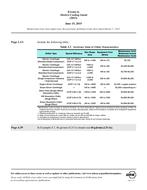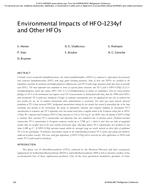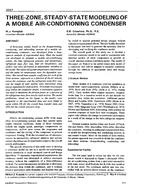Energy efficiency and greenhouse gases emissions reduction in buildings are considered as significant challenges in the engineering community. Great attention is being focused on the reduction of energy consumption in buildings both for economic and environmental factors. Heating, Ventilation and Air Conditioning (HVAC) systems are among the primary targets for implementing energy efficiency measures in buildings since they represent the biggest share of the energy consumption in buildings.
With this in mind, one of the main goals is to optimise the operation of the existing HVAC systems while maintaining adequate indoor conditions in terms of comfort. Modelling and simulation of HVAC components and systems are gaining great attention for the optimisation of HVAC operations, thanks to recent developments in model and simulation methodologies and software and the advantages brought forward by them. These new developments enable HVAC simulation models to actively support building’s operations by providing a reliable test bed on which experiments can be carried out to avoid doing so on the physical system and its associated risks.
Although modelling approaches seem to be converging to a structured framework depending on the particular application, the calibration of such models remains an open research area. This paper aims to improve an automated calibration methodology developed in previous works by using concepts from machine learning field and the Preisach’s model of hysteresis. The calibration methodology developed in this research work is implemented in existing and validated models in a way that the information required for the initial setup (pre-calibration) of the model is minimal. Afterwards, the tool automatically calibrates the models by using real data from the facility. A detailed case study with real data is also presented.
Citation: ASHRAE/IBPSA-USA Bldg Simulation Conf, Atlanta, GA, Sept 2014
Product Details
- Published:
- 2014
- Number of Pages:
- 8
- File Size:
- 1 file , 1.7 MB
- Product Code(s):
- D-BSC14-33


